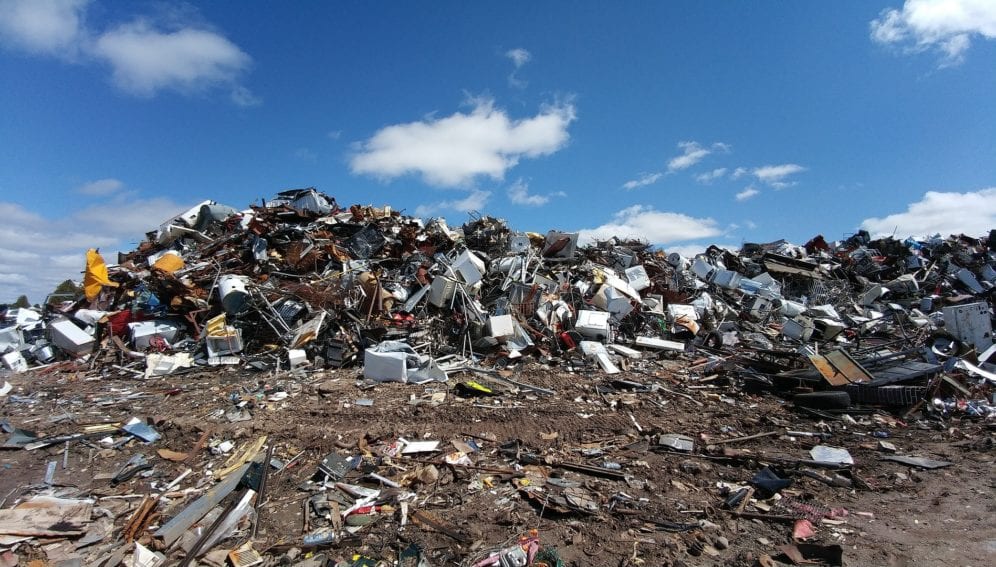Send to a friend
The details you provide on this page will not be used to send unsolicited email, and will not be sold to a 3rd party. See privacy policy.
With waste generation set to soar in developing regions, material reuse is crucial, say experts from the International Organization for Chemical Sciences in Development (IOCD).
On Earth Day (22 April 2019), it is sobering to recall that the World Bank has estimated that global generation of solid waste currently exceeds 2 billion tonnes per year and will rise by 70 per cent by 2050.
Plastics alone account for about 12 per cent of the current total of municipal solid waste.
Waste is generally regarded as any material discarded because it is a by-product or a product that is no longer of use. It is associated with a lack of value, as captured in alternative terms such as garbage, junk, rubbish and trash.
“We need to stop thinking of any materials as being waste and the very concept of waste matter should disappear.”
IOCD members Henning Hopf, Alain Krief, Goverdhan Mehta, Stephen A. Matlin
But we increasingly understand that this negative view has become inappropriate and that a more positive approach is necessary to achieve sustainability.
Waste is a particular problem for developing countries. This is not because they produce more. While only accounting for 16 per cent of the world’s population, high-income countries generate about 34 per cent of the world’s waste.
However, in the fastest growing regions of Sub-Saharan Africa, South Asia, and the Middle East and North Africa total waste generation is expected to nearly triple, double, and double, respectively by 2050.
In principle, every material can be reused, so that what has been discarded is actually material awaiting further use.
All matter is made from the same elements in different combinations, and capable of being transformed into other substances by chemical or biological processes.
In a world of finite resources, with enormous quantities of discarded matter damaging Earth’s environment and biodiversity, it is imperative that this further use is maximised.
We need to stop thinking of any materials as being waste and the very concept of waste matter should disappear.
Carbon dioxide emissions from the burning of wood and fossil fuels and concrete production have generated a significant increase in global temperature over the last century. And energy production from burning waste has added to those in recent years.
Attention globally is now being given to capturing this carbon dioxide and either storing it long-term (e.g. buried in abandoned mines or under the seabed) or converting it into products like refrigerants, carbonated drinks, fuels and fertilizers.
Effort is being directed to developing artificial photosynthesis, with the sun’s energy harnessed to convert water and carbon dioxide into carbohydrates and oxygen, imitating the natural process in plants.
Developing countries face a triple challenge in handling waste:
Low- and middle- income countries often have poorly developed waste management systems, so refuse is discarded in an uncontrolled manner or its disposal is not environmentally safe.
India’s award-winning Trashonomics education programme is one of many initiatives aiming to reduce production and uncontrolled discarding of garbage through behaviour change.
Some low- and middle-income countries in Africa, Asia and Latin America have become destinations for waste and scrap products produced in high income countries. Richer countries may find it cheaper to export waste than manage it at home under strict regulations but disposal in other countries can be more environmentally damaging.
Some low- and middle-income countries seek to recover valuable constituents from imported waste, but may not adopt or enforce adequate standards of environmental protection.
The 3R Initiative (Reduce, Re-use and Recycle) strives to make effective use of cycling of resources and materials. Agreed by the 2004 G8 Summit, it has been adopted by many countries, notably in Asia, and become a core feature of the so-called ‘circular economy’.
This approach aims to break the global ‘take, make, consume and dispose’ pattern of growth.
While increasing attention to these approaches is extremely welcome, we need a fundamental shift in global thinking if they are to have maximum impact.
Language itself conditions attitude and the word ‘waste’ needs to be replaced by a term with more positive connotations, that encourages constructive thinking about what is currently discarded.
The shift in language will signal a change in how matter is perceived when it is no longer needed for the original purpose and encourage the question “what can we now do with this matter?”
Of course, there will be many occasions when reuse is not economically or technically viable. But as history repeatedly shows, new technologies and applications are constantly emerging.
We must reuse post-trash as much as practical and learn how it can be efficiently and safely stored, instead of allowing waste to be discarded and contaminate our environment.
IOCD members Henning Hopf, Alain Krief, Goverdhan Mehta, and Stephen A. Matlin














